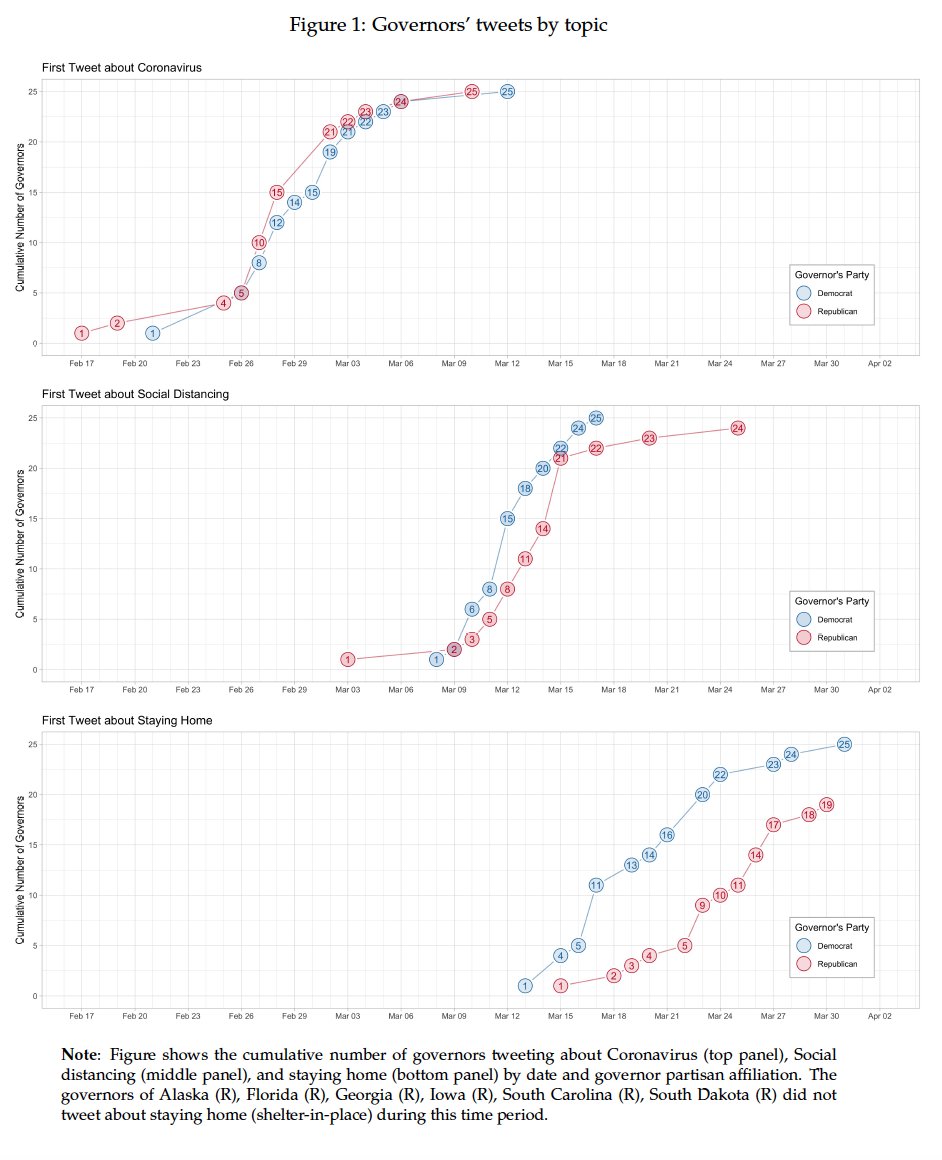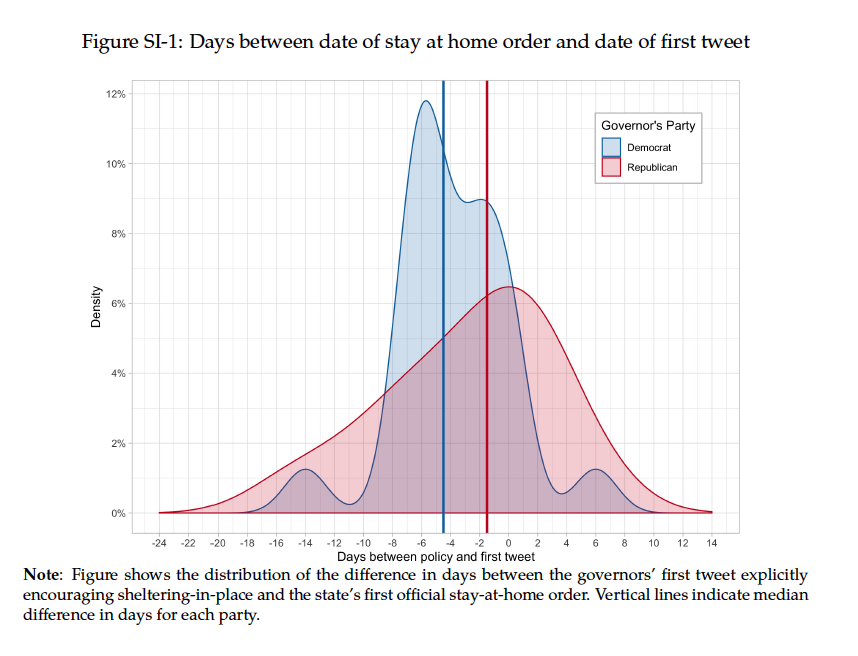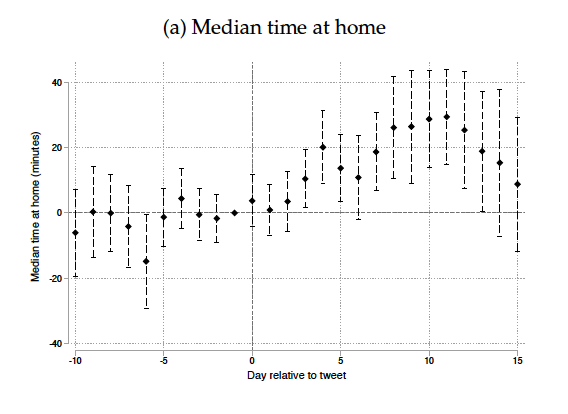***TWEET THREAD***
New working paper with @guygrossman @hthirumurthy and @soojongkim_1
"Political partisanship influences behavioral responses to governors’ recommendations for COVID-19 prevention in the United States"
link: https://papers.ssrn.com/sol3/papers.cfm?abstract_id=3578695">https://papers.ssrn.com/sol3/pape...
New working paper with @guygrossman @hthirumurthy and @soojongkim_1
"Political partisanship influences behavioral responses to governors’ recommendations for COVID-19 prevention in the United States"
link: https://papers.ssrn.com/sol3/papers.cfm?abstract_id=3578695">https://papers.ssrn.com/sol3/pape...
Reducing the spread of COVID-19 requires voluntary distancing. But partisanship may influence willingness to heed recommendations from politicians. We study how voters respond to their governors& #39; Twitter communications about the virus during the early days of the pandemic.
Governors often tweeted recommendations that citizens engage in social distancing or stay home days before issuing official stay at home orders; Democratic governors tweeted more and earlier. These tweets may drive behavior in the critical period before official orders are issued
Using data on 545 million geolocated device-days and ~10k tweets issued by state governors, we identify three main findings:
i) Tweets about staying home reduce mobility
ii) Tweets matter more in D than R-leaning areas
iii) Partisan differences most pronounced under R governors
i) Tweets about staying home reduce mobility
ii) Tweets matter more in D than R-leaning areas
iii) Partisan differences most pronounced under R governors
1. Governors& #39; tweets about staying home reduce mobility. Counties exposed to these messages stay at home 9.4 more minutes per day in the days after the tweet, or 2.6%. This is over and above the effect of orders, and similar in magnitude to the effect of the orders themselves.
Governors& #39; tweets encouraging citizens to stay home also lead to significant increases in Google search interest for phrases like "stay at home" and "shelter in place" in metro-areas exposed to the tweet.
2. These effects vary by political preferences. We find that counties supporting Clinton in the 2016 election increase time at home by 14.8 minutes, while Trump-supporting counties spend 8.9 more minutes at home. Still, both types of counties respond positively.
3. This partisan response divide varies by governor identity. Under GOP govs, Dems respond substantially more than Reps. However, under D govs, there is no partisan divide. Ds in R states respond more than Ds in D states; Rs respond similarly irrespective of the governor& #39;s party.
Quantitatively, the median D county in a R state (Trump -22) increases time at home by 29.8 minutes (an 8.2% increase), while the median R county (Trump + 48) in the same state responds with 5.2 minutes, or 2.9%.
These results appear counterintuitive, but are consistent with the literature on partisan signals in political endorsements. GOP govs who sounded the alarm on COVID-19 sent a strong signal to D citizens since those messages contrasted to the views held by national GOP leaders.
Elite cues are stronger when they do not conform with the party affiliation of the elites. However, Democratic governors were largely expected to encourage social distancing, blunting the force of the signal and therefore the overall effects of their Twitter communications.
The fact the GOP leaders sent mixed messages about COVID-19 explains why the effect of R govs’ messaging was stronger in D and moderate R counties than conservative ones. Conservatives react to signals from local GOP leaders that contradict national party messaging with backlash.

 Read on Twitter
Read on Twitter







